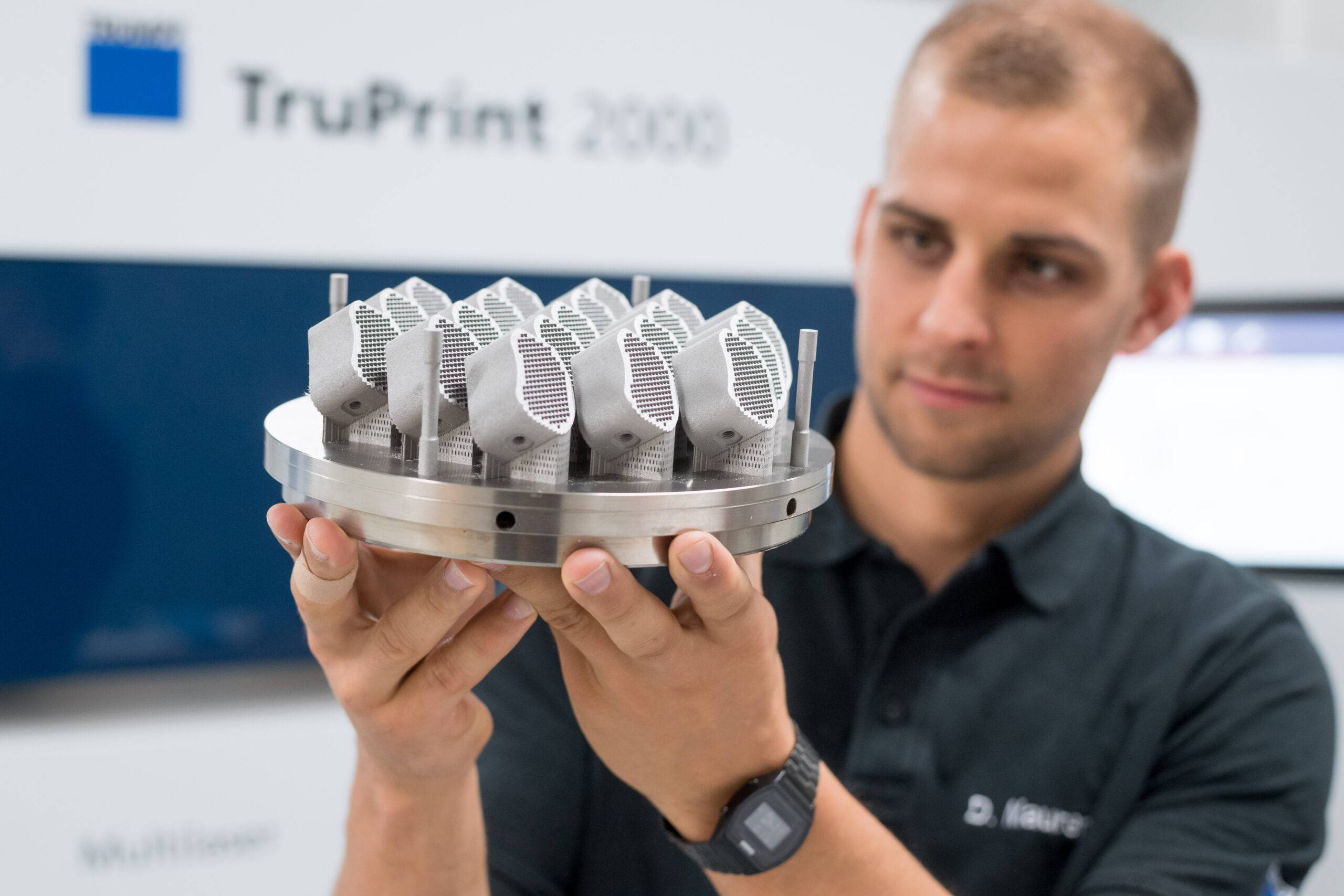German high-tech company TRUMPF unveiled a new 3D printer at Frankfurt’s Formnext, the leading international trade fair for additive manufacturing. Called TruPrint 2000, it lends itself to medical engineering and other applications with lofty standards and quality. TRUMPF experts revamped the system so inert gas now flows through it back to front. This enhances printed parts’ quality. In another new development, the operator can now remove excess powder from the component right there in the system rather than having to take it out and unpack it at a separate station, as in the past. This is easier and saves time when dealing with the smaller build chambers of 3D printers such as the TruPrint 2000. The newly designed machine now processes the printing powder in an inert gas environment, which prevents contaminants from infiltrating he powder circuit. This is a key advantage for sensitive medical devices and the like.
“With the TruPrint 2000, we are showing that TRUMPF puts the needs of AM-focused industries first – that is, the aerospace, automotive, mechanical engineering, tool and mold making, and the medical and dental engineering industries. The TruPrint 2000 enables manufacturers to take advantages of additive manufacturing’s benefits – particularly medical and dental engineering companies,” says Klaus Parey, managing director TRUMPF Additive Manufacturing.
The TruPrint 2000 features the Multilaser design. Two 300-watt lasers working in tandem illuminate the 3D printer’s entire build chamber to boost the system’s productivity. Taking the same approach as for the TruPrint 1000, TRUMPF development engineers reduced the TruPrint 2000 laser’s focal diameter to 55 micrometers to print components with smoother surfaces, enhanced quality and intricate grid structures. The TruPrint 2000 is perfectly at home printing parts out of titanium, a material that figures prominently in medical devices. Companies do not need a separate unpacking station, so they also save money with this printer. “The machine’s new design brings the benefits of lean manufacturing to users. It requires fewer add-ons, so the entry-level investment is lower for companies that want to get into AM,” says Florian Krist, product manager at TRUMPF Additive Manufacturing.
Users enjoy the benefits of automated powder bed and melt pool quality monitoring. In the event of an error, the system notifies the operator, who can then take remedial action. Another great benefit is an end-to-end documentation trail that corroborates the quality of the printing process. This is a key prerequisite for the additive manufacturing of medical devices.
TRUMPF has already used the new machine to print interbody cages, which are implanted to add stability to the spine. These can be inserted as a placeholder between two vertebrae to restore the vertebral segment’s natural height. The lasers’ small focal diameter lends itself to fabricating the implants’ intricate structures. Healthy bone tissue adheres well to these structures. It takes this new system just 24 hours to produce 19 spinal implants. It not only serves medical engineering companies well; it is also an excellent choice for dental applications and tool and mold making. With 300 watts of laser power, it has no trouble handling standard materials such as cobalt-chromium alloys. With that kind of performance, it can readily fabricate dental casts as well as injection-molded parts with complex internal cooling channels. “They provide a more precise way of controlling the temperature of tools during production, which makes them more durable and improves cast parts’ machining quality. This also slashes cycle time for printed tools and boosts productivity.



